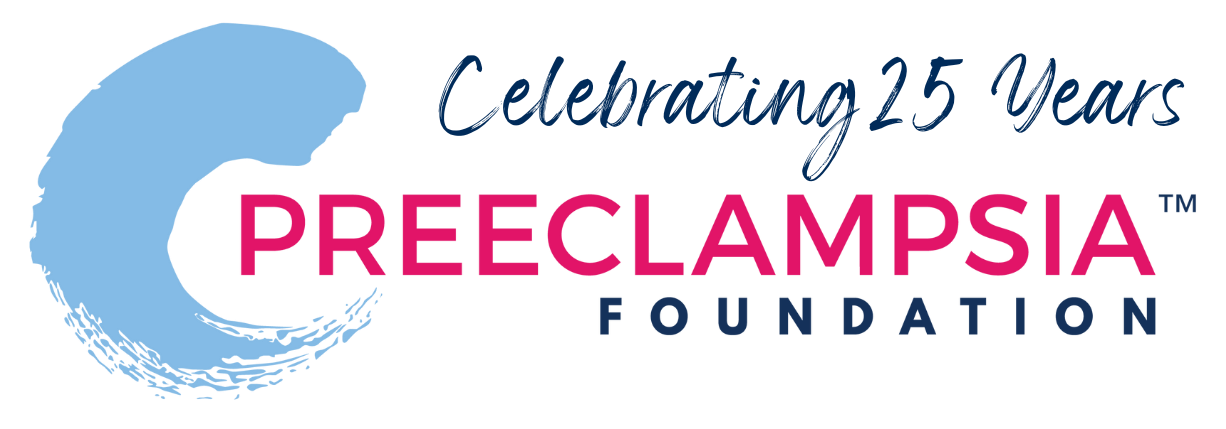
Study looks at our understanding of risk reduction and prevention of preeclampsia
Research suggests that preeclampsia may develop in a two-stage process. The first stage involves challenges to the way that the placenta implants and grows. In a normal pregnancy, a type of placental cell changes blood vessels in the uterus to ensure adequate blood flow to the developing fetus. However, in preeclampsia this process does not happen like it should. It appears that the blood vessels do not implant deeply or broadly enough. As a result, less oxygen is able to reach the placenta. In very simple terms, the second stage of the disease happens when the mother's body begins to drive up her blood pressure to improve blood flow and nutrients to the fetus. This can result in damage throughout her blood vessels and eventually many organs. That's why preeclampsia seems to impact each patient a little differently... including the heart, lungs, liver, kidneys, or brain. Inflammation also appears to play a role, though more research is needed.
What we do know is that early detection and prevention are crucial in managing preeclampsia and reducing maternal and fetal complications. In this systematic review and meta-analysis, researchers in Kazakhstan aimed to summarize current advancements in preeclampsia screening, including clinical risk factors, biomarkers, imaging techniques, and predictive models. (A meta analysis is a review of multiple research studies.)
Current screening models rely on health history and risk factors, while emerging approaches incorporate biomarkers, ultrasound, and AI. It is important to understand that while we are understanding more about risk factors, there is no certain way to prevent preeclampsia even in those who are at high risk to have it. You can read more in this article about the difference between risk reduction and prevention.
This meta-analysis looked at multiple factors, including...
Clinical assesment
Clinical assessment is when a physician evaluates a patient’s medical history and risk factors to determine their likelihood of developing preeclampsia. A meta-analysis of over 92 studies, covering 25 million pregnancies, identified several key risk factors. The strongest predictors were a previous history of preeclampsia and chronic hypertension. Additional risk factors included being a first-time mother, maternal age of 35, chronic kidney disease, conception via assisted reproductive technology, and preexisting diabetes.
Biochemical markers
During a healthy pregnancy, the mother’s body releases specific molecules that stimulate the formation of new blood vessels. This process is carefully controlled by the balance of signals that promote blood vessel growth, like VEGF and PIGF, and blocking signals that suppress blood vessel formation, like sFlt-1. In preeclampsia there is an excess of sFlt-1 and not enough of VEGF and PIGF. Doctors can measure the balance between these signals using the sFlt-1/PIGF ratio in the mother’s blood. A high ratio can help doctors diagnose preeclampsia before symptoms appear. This test is a quick, accurate, and cost-effective method for predicting preeclampsia risk.
Ultrasound
Ultrasound has emerged as a helpful tool for predicting preeclampsia. One method, called uterine artery Doppler (more commonly used in the EU than the US), assesses blood flow to the uterus. If the flow is abnormal early in pregnancy, it can suggest problems with placental development and a higher chance of preeclampsia. Other ultrasound checks look at the size, thickness, and shape of the placenta. If these measures come back abnormal, doctors can intervene early on and provide management procedures to lessen the risk for maternal fetal complications.
AI and machine learning-based models for risk prediction
With the advent of artificial intelligence (AI) and machine-learning (ML) algorithms, clinicians can more accurately predict patients’ risk for preeclampsia based on routine clinical data such as blood pressure, fasting plasma glucose, and body mass index. Researchers propose that integrating these prediction tools into existing electronic health record (EHR) systems can allow for automated risk calculation in real time. While this field is still emerging, successful implementation of a prediction tool for preeclampsia will require the collaboration between clinicians, data scientists, and policymakers.
Current strategies for preventing preeclampsia
Multiple large studies suggest that low-dose aspirin (60-150 mg/day) is effective at reducing the risk of preeclampsia and its complications when taken during pregnancy. Low-dose aspirin has been found to improve placental blood flow and lessen the likelihood of preterm birth and fetal growth restriction. However, it is important to note that patients should consult with their physicians about the use of aspirin in their care plan. Typically, it is advised that low-dose aspirin is discontinued by 36 weeks into pregnancy.
Calcium supplements (500-1500 mg/day) have been found to reduce the risk of preeclampsia in populations who live in low and middle income countries where calcium is nutritionally scarce. A meta-analysis of over 20,000 participants found that calcium supplementation significantly reduced preeclampsia risk, in individuals with low baseline calcium intake. This study measured low- and high-dose supplementation and found that both were effective. It’s important to note, however, that calcium supplementation has not been proven to reduce the risk of preeclampsia for pregnant women who already get plenty of calcium in their diet, such as those based in the US.
Lastly, healthy weight management and regular exercise before and during pregnancy further reduce preeclampsia risk. Studies have shown that incorporating 25-minute sessions of either aerobic or strength training at least three times a week was particularly effective in reducing hypertensive disorders in pregnancy.
Take home message:
Early screening methods for preeclampsia are crucial in lessening both maternal and fetal complications. In addition to the standard clinical assessment, research suggests innovations such as biomarkers, ultrasound, and AI-driven predictive models are promising improvements for preeclampsia detection early on in pregnancy. Integrating these screening tools with personalized prevention plans has the potential to significantly reduce the health and economic burdens of preeclampsia while improving pregnancy outcomes. Future studies should test these prediction models in diverse populations, integrate AI with regular screening methods, and create personlized plans to help reduce preeclampsia risks and complications.
Citation: Alipova G, Ablakimova N, Tussupkaliyeva K, Bermagambetova S, Kosmuratova S, Karimsakova B, Gaiday A, Gaiday A, Dinets A, Tussupkaliyev A. Prevention of Pre-Eclampsia: Modern Strategies and the Role of Early Screening. J Clin Med. 2025 Apr 25;14(9):2970. doi: 10.3390/jcm14092970. PMID: 40364001; PMCID: PMC12072587.
Link: https://pmc.ncbi.nlm.nih.gov/articles/PMC12072587/
About Research Roundup
Each quarter, our team of science writers reviews the most current research studies related to hypertensive disorders of pregnancy and summarizes those studies of greatest interest and potential impact to our community, including research studies related to risk assessment, diagnosis, prevention, and treatment. Special thanks to our volunteer research team including Dr. Sig-Linda Jacobson, Dr. Jennifer Mitchell, Dr. Julie Reynolds, Amanda Yang, and Simren Gupta who make Research Roundup possible, and to our Patient Advisory Council, who reviews these materials from the patient perspective.
Related Articles

Your story is needed to improve outcomes for moms like you. Add your voice to critical preeclampsia research to ensure that every story is heard.

Frequently asked questions about the Preeclampsia Registry, a patient-driven registry and biobank.

The Preeclampsia Foundation offers research funding, study recruitment, and other patient engagement services to researchers.

We provide research grant funding to advance progress towards detection, prevention, or treatment of preeclampsia, HELLP syndrome, and other hypertensive disorders of pregnancy.

Shattered Expectations: What happens after the unexpected? You may have received the unexpected news that you have preeclampsia or another hypertensive disorder of pregnancy. Maybe labor complic...

While the foundations of preeclampsia are believed to develop in the early stages of pregnancy, the current screening process occurs at 20 weeks, nearly half way through the second trimester. When cli...

The risk of developing hypertension and cardiovascular disease (CVD) significantly increases for patients who experience gestational hypertension, preeclampsia, or other hypertensive disorders of preg...

Cerebral complications from preeclampsia and eclampsia are a major cause of maternal mortality and long-term neurological impact. Understanding pathophysiology (changes in how the body works as a resu...

The Preeclampsia Foundation is seeking Letters of Intent for the Peter Joseph Pappas Research Grants funding program, designed to accelerate preeclampsia research. The ultimate goal of this grant prog...



